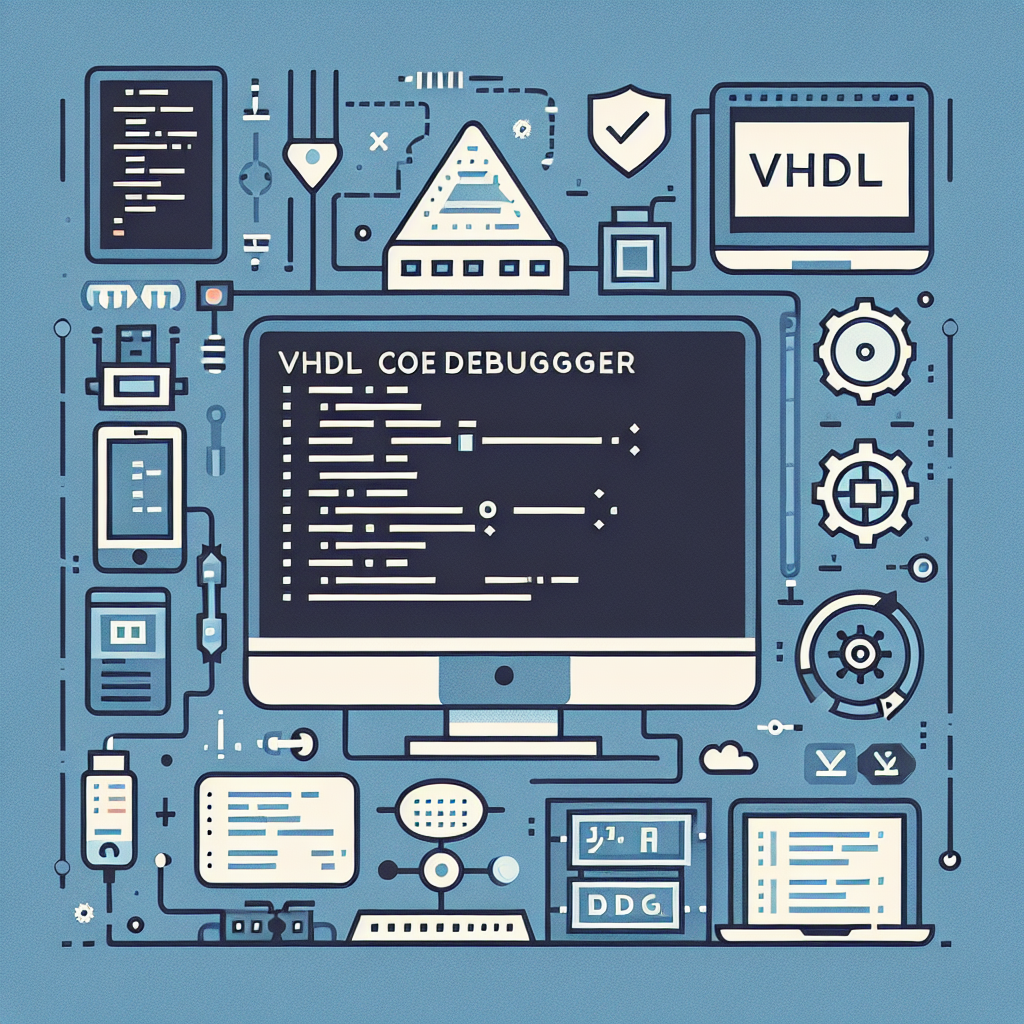VHDL Code Generator: Streamline FPGA Design Fast
Unlock seamless VHDL code generation with our intuitive tool. Streamline FPGA design, boost efficiency, and accelerate your projects effortlessly.
Describe Your Code
Generated Code
Output will appear here...
The VHDL Code Generator is a powerful tool designed to streamline digital circuit design by automatically creating efficient VHDL code. Ideal for FPGA developers and hardware engineers, this tool enhances productivity by reducing manual coding errors and accelerating the design process. With features like real-time simulation and customizable templates, it optimizes workflow and ensures seamless integration into your development environment.

VHDL Code Generator: Streamline Your FPGA Design Link to this section #
The VHDL code generator is an essential tool for FPGA designers, enabling rapid development and prototyping of digital circuits. This tool automates the creation of VHDL code, ensuring accuracy and efficiency while reducing manual coding errors.
Key Features Link to this section #
- Automated Code Generation: Quickly convert high-level designs into VHDL code, saving time and minimizing errors in digital circuit projects.
- Customizable Templates: Utilize predefined templates or create custom templates tailored to specific project needs.
- Integrated Simulation: Seamlessly integrate with simulation tools to verify the functionality of generated code.
Benefits Link to this section #
- Efficiency: Significantly reduces the time spent on writing repetitive code, allowing engineers to focus on optimization and innovation.
- Accuracy: Ensures syntactically correct VHDL code, reducing debugging time and improving overall project reliability.
- Scalability: Easily scale projects by modifying high-level parameters and regenerating VHDL code, supporting iterative design processes.
Example Code Snippet Link to this section #
Below is a simple example of a VHDL code snippet generated by a VHDL code generator for a flip-flop circuit:
library IEEE;
use IEEE.STD_LOGIC_1164.ALL;
entity D_flip_flop is
Port ( D : in STD_LOGIC;
clk : in STD_LOGIC;
Q : out STD_LOGIC);
end D_flip_flop;
architecture Behavioral of D_flip_flop is
begin
process(clk)
begin
if rising_edge(clk) then
Q <= D;
end if;
end process;
end Behavioral;
How to Get Started Link to this section #
- Select a VHDL Code Generator: Choose a tool that suits your specific needs. Consider factors such as ease of use, integration capabilities, and support for various FPGA platforms.
- Define Design Parameters: Input your design specifications and constraints to generate customized VHDL code.
- Verify and Simulate: Use simulation tools to test the generated code, ensuring it meets design requirements before deployment.
For more information on VHDL and FPGA design, consider reviewing resources from IEEE Xplore and FPGA University.
By leveraging a VHDL code generator, engineers can enhance productivity, accuracy, and scalability in their digital circuit design projects.
Frequently Asked Questions
What is a VHDL code generator and how does it work?
A VHDL code generator is a tool or software that automatically creates VHDL (VHSIC Hardware Description Language) code based on specific input parameters or high-level hardware design descriptions. It works by taking abstract representations of hardware functionalities and converting them into syntactically correct VHDL code that can be used for simulation or synthesis in hardware design projects.
What are the benefits of using a VHDL code generator?
Using a VHDL code generator can significantly speed up the development process by automating repetitive coding tasks, reducing the likelihood of human error, and ensuring consistency across different sections of code. It also allows designers to focus on high-level design and verification rather than low-level coding details, which can enhance productivity and improve design quality.
Are there any limitations to using VHDL code generators?
While VHDL code generators can greatly improve efficiency, they may have limitations such as generating overly generic or non-optimized code that might require further manual refinement. Additionally, some generators may not support all VHDL features or complex design architectures, which could necessitate additional manual coding or the use of supplementary tools to achieve the desired functionality.